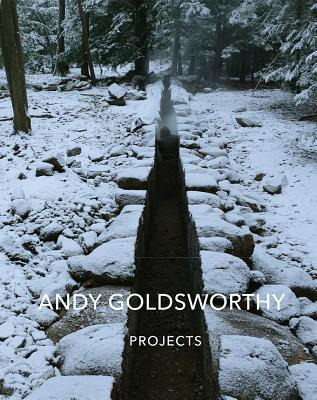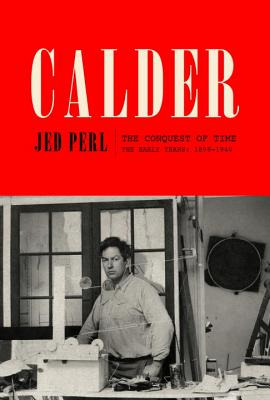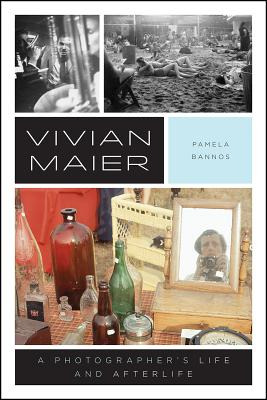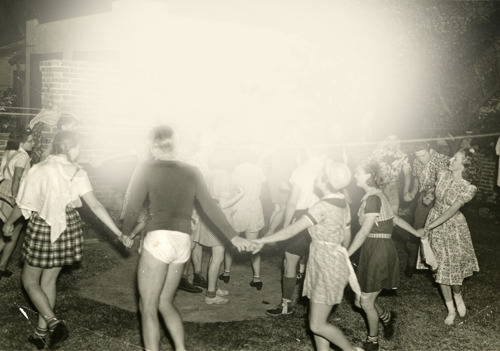Text
2017 Holiday Newsletter
Welcome to the 2017 Politics and Prose Holiday Newsletter. As always, we’re proud to present a selection of some of the year’s most impressive books. Happy holidays to all!
Graphics

Chris Ware’s new collection, Monograph by Chris Ware (Rizzoli), assembles countless strips, pages, magazine covers, sculptures, photographs, and other things into a thorough and astoundingly generous retrospective of the artist’s career. It comes replete with commentary written by Ware himself, who charts his path from RAW to Jimmy Corrigan to Building Stories and beyond. Reading this book is like touring the interior of a vast and seemingly impossible mechanism carved from space metal, while your tour guide chats amiably and bemoans the lack of carpets. There are also individual booklets within the book that you can flip through, and several of his New Yorker covers depicted in their full glory. For any fan of the cartoonist, this is probably the single best purchase you could make this holiday, a blueprint for everything Ware has done over the past few decades. But for artists, this is something even better: Chris Ware opens the door backstage, shows you how he performs the magic tricks, and then gives you a chance to do it yourself. - Adam W.
Art and Artists

The Art Museum, by the editors of Phaidon Press, brings together an astonishing cross-section of work from around the globe and throughout time, reproduced in over 1,600 beautiful color images. The reader can jump from virtual room to virtual room by flipping the pages, or stay in one place for a comprehensive study. This book is perfect for an art lover, a person who wants to learn about art, or someone who loves art but whose feet just can’t take the Smithsonian anymore. A single book doesn’t get more entertaining or informative than this, and finally there is no crowd standing in front of what you want to see. - Bill L.

Women Artists in Paris: 1850-1900 (@yalepress) edited by Laurence Madeline, former curator at the Musée d’Orsay, is a must-own for art lovers, historians, and feminists alike. This stunning exhibition catalogue presents over eighty paintings by thirty-seven different artists. Paris in the late nineteenth century was considered the place for artists to train, and people came from around the world to develop their technique. This catalogue is a testament to the exceptional and varied work produced by the women who journeyed to Paris to pursue their artistic ambitions. These artists fought to achieve recognition at a time when artistic talent and creative genius were thought to be reserved for men, all the while also trying to adhere to the social norms that governed the lives of respectable women. They persevered in the face of rejection and condescension, and created masterful works of art in the process. The scholarly essays that open the book are fascinating and well worth the read, but the catalog of full-page color reproductions that follow are what readers will find irresistible. Here you will encounter works by household names like Mary Cassatt alongside those by artists still waiting to achieve the widespread public recognition they are due, such as Marie Bashkirtseff and Cecilia Beaux. - Alexis J. M.

Projects (@abramsbooks) chronicles forty-four Andy Goldsworthy installations around the world, as they change and evolve with their environments. This book, a companion volume to Goldsworthy’s Ephemeral Works, includes stunning photographs, site maps, and an extensive interview. You’ll find his usual cones and labyrinths made of wood and stone, but unlike his “ephemeral” works, whose construction marked an endpoint, these pieces began life only when Goldsworthy finished them, for they evolve as they are weathered by the seasons. Goldsworthy documents, for example, walls covered in porcelain clay, as they dry, crack and tear away, and enormous slate chambers, enclosing wind-fallen branches, which gradually transform as moss and fungi cover them. He repaves an ancient forest track with rectangular stones and cuts a new path across an Ohio estate, always maintaining 950 feet above sea level. An igloo of woven branches sits inside a pit, accessed through a doorway via steps in a terraced wall. A flowing line of fallen cypress weaves through eucalyptus trees, which overtake a California landscape. But whatever he does in these installations, Goldsworthy invites us to experience nature freshly. This gorgeous, glossy volume will make an extraordinary gift for the art or nature lover in your life. - Amanda H.D.

Rothko: The Color Field Paintings (@chroniclebooks) is a tribute to one of the greatest periods by a single painter in art history. Mark Rothko (1903-1970), one of the leading Abstract Expressionists, pioneered the large, flat fields of solid color that Clement Greenberg dubbed “color field painting.” He worked his way toward them throughout the 1940s, and by 1949 had “arrived,” as his son, Christopher Rothko, says in the Foreword. The artist pursued color fields for the rest of his life, arranging two, three, and four color rectangles in dramatic and shimmering patterns that establish kinetic relationships between the viewer and the canvas. Presenting fifty of Rothko’s iconic paintings in chronological order, this book allows you to watch the artist develop his style and discover what the colors and rectangles could do; you can see the shades deepen, and darken. The volume also allows you to savor the full, luminous power of each composition, giving you the images one by one, with plenty of white space for the colors to breathe. Janet Bishop, curator of painting and sculpture at the San Francisco Museum of Modern Art, provides a commentary on Rothko’s legacy. - Bennard F.

Alexander Calder (1898-1976) was the son and grandson of sculptors, but when he went to school he studied engineering. Later, committing himself to art, he chose painting, like his mother. It took a few years before he accepted his fate and turned to sculpture. This brief period of indecision is the single moment of angst in the life of one of the twentieth century’s most joyful and original modern artists. Inheriting his father’s dexterity as well as his “playful, lively, fantastic” tendencies, Calder (Knopf) dedicated his life to animating the inanimate. In Jed Perl’s lively, affectionate, and thorough account to 1940, Calder’s life was pretty much on track from the start. With the avant-garde “always part” of it, he grew up in the artistic circles of both France and the U.S., a peripatetic life he continued. He was an incorrigible punster (see his work A Merry Can Ballet) and everything he did was infused with humor. Perl traces Calder’s jeux d’esprit from the early portraits and objects he made by bending wire, works that “suggested rapidly executed line drawings leaping into the third dimension,” to the elaborate Cirque Calder that was meant to be performed, not just looked at, and on to his abstractions, which were also a “menagerie…of unexpected forms” in motion, and which Perl, in the spirit of his subject, describes as “motions galumphing, jagged, swishy, swirly.” As playful as they were serious, these mobiles (named by Duchamp) and stabiles (so-called by Jean Arp) revolutionized sculpture, taking a stationary form, making it move, and creating new relationships between the viewer and the art. Perl is tireless in tracing Calder’s influences, which included Miró, Klee, Hélion, Saul Steinberg, Mondrian, Edgar Varèse, Martha Graham, and Malcolm Cowley. All were his friends, and Perl’s engaging, scholarly, and buoyant biography—and its 400-plus photos—makes it easy to see why. - Laurie G.

Among the few things known about Vivian Maier: she was a great photographer. She worked as a nanny. She was born in New York, lived in France from age six to twelve, grew up in a splintered family, spent the last fifty years of her life in Chicago, and left tens of thousands of photos, negatives, slides, and undeveloped rolls of film in storage. Once these surfaced after being auctioned off, their new owners began the myth-making that Pamela Bannos, a professor of photography, both charts and refutes. Her Vivian Maier (Chicago) is a kind of Emily Dickinson of photography; while she roamed the streets relentlessly, she let no one in. Her neighbors thought she was homeless because she spent so much time on a park bench. In lieu of friends to interview, Bannos turned to the photos for clues to Maier’s life. She has studied seemingly every image Maier recorded, and follows in her footsteps from Maier’s first forays with a camera in the early 1950s, in France, through her development as a prodigious street photographer in New York and Chicago, and her travels through Europe, South America, and Asia. Looking at what Maier looked at, Bannos reads these images beautifully, giving insight about Maier’s brilliant sense of composition, her experiments, and her ever-evolving technique. She identifies the cameras Maier used, points out angles, notes lighting and shadows, and traces recurrent themes. She brings the pictures to life so vividly, and is so convincing about what was in Maier’s mind at the moment she framed each shot, that this eloquent photographic interpretation itself becomes a masterful biography of Maier not as an eccentric but as a true artist and an uncommonly independent woman. - Laurie G.
Vermeer Diptych

The ne plus ultra of Vermeer art books, Vermeer in Detail (@abramsbooks) is a conclusive cataloguing of all thirty-two paintings by the master, accompanied by 170 extremely intimate—often full page—magnifications. Satisfyingly, in this one volume is everything the eye can take in from a Vermeer painting, elucidated by a thorough presentation of all the documentation and research we do have about the dismayingly mysterious, historically unreachable Johannes Vermeer. And yet this canonical volume’s greatest asset is the lightness with which author Gary Schwartz wears his learning. An American art historian residing in the Netherlands, Schwartz delivers prose unencumbered by any scholastic staidness or over-certainty, taking an intelligent but lightsome tone wholly befitting Vermeer’s oeuvre (“Dear Reader: it’s every Vermeer scholar for himself on this one,” he avers at one point). The manner in which Schwartz groups his chosen details into chapters is itself a revelation, providing fascinating insight into life in 17th- century Delft, as well as into Vermeer’s technical genius, yet nowhere detracting from the sheer awe of viewing the Old Master at such microscopic proximity. - Lila S.

A fascinating exercise and assay, Traces of Vermeer (@oupacademic) serves as an elucidating technical accompaniment to the broader scope of Vermeer in Detail. Jane Jelley is, first and foremost, a painter. But she has become something of a reconstructive art historian through her engagement with Vermeer and his artistic process. Vermeer’s startling command of light, the snapshot-like quality of his 17th century masterworks, has long baffled even his greatest admirers. It would seem he used a camera obscura as an optic aide, but how exactly Vermeer might have used it—and whether its use in some way detracts from his genius—has been highly controversial. Jelley brings a vast knowledge, and, more importantly, practice, of traditional painting techniques to this discussion: grinding one’s own pigment, preparing canvases, long apprenticeships, third glazes. Through trials in the studio, she proposes a novel suggestion as to how exactly Vermeer could have used a camera obscura lens to arrive at his compositions, plot them onto canvas, and then prepare and layer paint to create his unparalleled works. The process, she maintains, would only further elevate Vermeer’s genius. Jelley’s engaging prose is a boon to both scholars and casual art appreciators. - Lila S.
6 notes
·
View notes
Photo

In this scholarly but accessible exploration of the life of outsider Chicago photographer Vivian Maier, Northwestern photography professor Pamela Bannos sheds some much needed light on the elusive and misunderstood Maier. Rigorously researched and beautifully written, this is the bio that Maier deserves! 🙌🏽📸 #vivianmaier #unabridgedbookoftheweek #pamelabannos (at Unabridged Bookstore)
6 notes
·
View notes
Link
#vivian maier#findingvivianmaier#finding vivian maier#vivianmaier#vivianmaiersfracturedarchive#fractured archive#pamelabannos
2 notes
·
View notes
Photo

Pamela Bannos, Micro
“Each image was drawn with a glowing ember.”
6 notes
·
View notes
Photo

Both the documentaries and the books published [about Vivian Maier] so far promote the Mary-Poppins-with-a-camera enigma. But the BBC film (like a WTTW report that was among the first pieces of coverage) includes interviews with Pamela Bannos, a photographer and senior lecturer at Northwestern who specializes in historical projects. She says the nanny narrative, honed by men who control Maier’s legacy and “like a good story,” gives the photographer “short shrift.”
9 notes
·
View notes
Photo

Pamela Bannos, from series The Light, 2008-2012, archival inkjet print, 30 x 40 inches
image from the group exhibition Light and the Unseen, http://www.hydeparkart.org/exhibitions/emlight-and-the-unseenem
14 notes
·
View notes
Photo

Vivian Maier in Central Park April 22, 1955 Vintage transparency from the Ron Slattery Collection Ektachrome 120 film, 12 ASA, E-2 processed (via Pamela Bannos: Vivian Maier project)
16 notes
·
View notes
Photo

Victoria Von Hagen, October Vogue 1952 (by dovima_is_devine_II)
2 notes
·
View notes
Photo

James Nizam, Shard of Light, 2011
30 notes
·
View notes
Photo

Shikanosuke Yagaki, Grasshopper on wall, 1930s
889 notes
·
View notes
Photo

(via Pamela Bannos - Amnesia) from, Amnesia, selenium toned silver print, 2003
1 note
·
View note
Photo

Animated Gif - Pamela Bannos
Artists on tumblr
476 notes
·
View notes
Photo

July 23, 2012, over the stormy sky between NYC and Chicago.
2 notes
·
View notes
Photo

Popular shoulder length hairstyle worn by teenagers.
Tulsa, OK, US July 1947By Nina Leen
4K notes
·
View notes
Photo

March 24, 2012. Sky over the Rocky Mountains.
2 notes
·
View notes
Photo

Pamela Bannos, Venice, September 3, 2011.
5 notes
·
View notes
